To talk about Gloucester’s annual St. Peter’s Fiesta, you have to talk about the Greasy Pole. This 45-foot-long telephone pole extends horizontally from a wooden platform in the harbor, hovering anywhere from 10 to 25 feet above the water, depending on the tide. Each year, in late June, the pole is slathered with thick grease, and a flag atop a stick is nailed to the end.
Then, on the last weekend of the month, a few dozen daring young men (and the occasional woman) try to traverse the slippery pole and be the first to wrest the flag from its spot. Some try to inch carefully along, while others bank on speed and momentum. Most fall into the water, and many emerge with bruises, scrapes, and even the occasional broken bone.
“It’s intimidating if you’re not ready for it, especially at low tide,” says Tom Favazza, a Greasy Pole winner in 1985 and a current organizer of the event. “You just can’t think about it.”
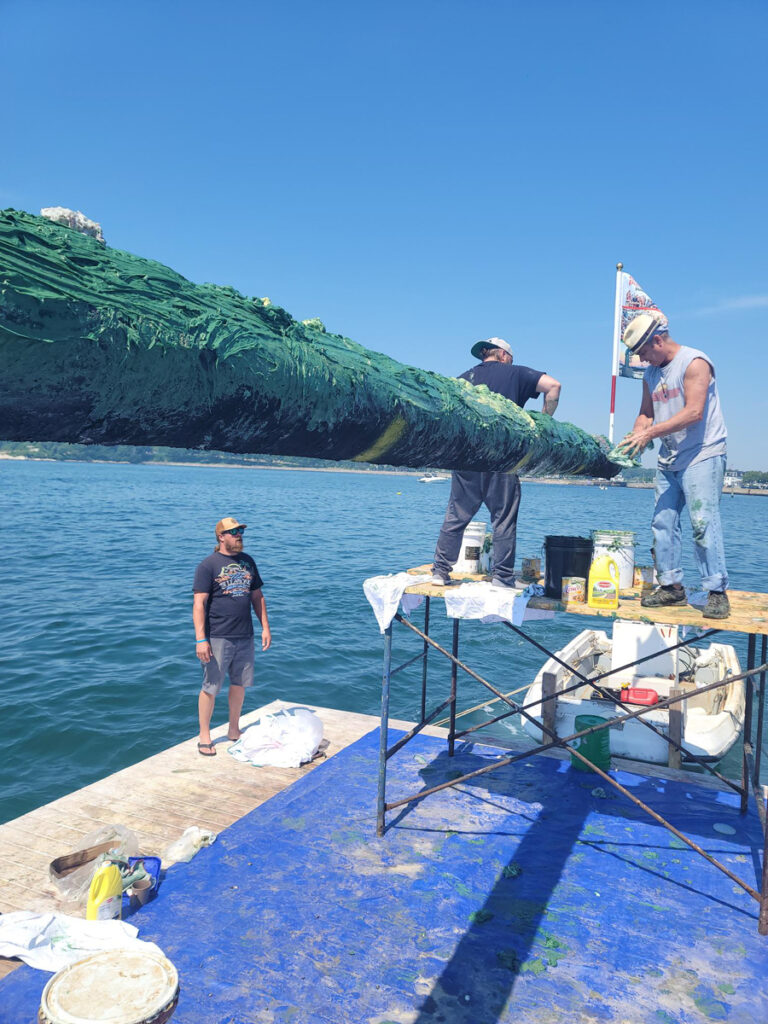
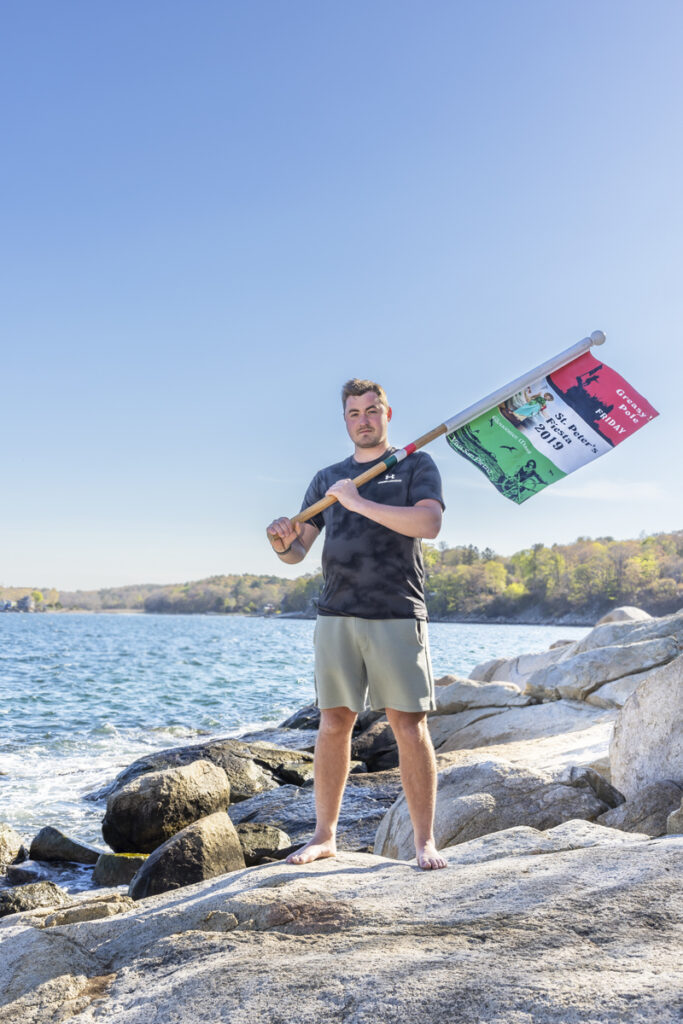

The Greasy Pole is one of the centerpieces of the St. Peter’s Fiesta, a five-day festival that honors Gloucester’s Sicilian heritage and the legacy of its fishing industry. Called simply “Fiesta” by locals, the event is highly anticipated and deeply cherished in a community that has long prided itself on its strong immigrant roots and the strength of its now-declining fishing industry.
“It is a celebration and a cultural institution,” says Gloucester mayor Greg Verga. “It’s kind of like Christmas—you wait for it all year, and when it finally comes, the excitement around Gloucester is very noticeable.”
This year’s Fiesta runs June 26–30. The festival schedule is packed with live entertainment, a carnival, a 5k race, children’s competitions, an outdoor Mass, and the blessing of the fleet. There’s the Greasy Pole, of course, and the seine boat races, an homage to the strength, endurance, and teamwork of the fishermen who rowed these boats to haul in fish on the open seas.

On Sunday, a procession winds through the streets of Gloucester. Men carry a statue of St. Peter on their shoulders, and children wearing white carry painted oars bearing the names of the old fishing families of Gloucester. Walkers and spectators join in the repeated chant of “Viva San Pietro!”
The religious origins of Fiesta are still very much part of the event. For nine days before it begins, a novena is celebrated: Dozens of people, mostly women, gather in front of the statue of St. Peter to pray and sing.
“It’s just a very emotional gathering of people who really have that faith,” says Laura Alberghini Ventimiglia, who wrote the children’s book Nonna, What is St. Peter’s Fiesta? “I think the faith is in family and tradition as much as it is a religious faith.”
People who grew up in Gloucester and then moved away make a point to return for Fiesta, says Joe Novello, a member of the organizing committee for 42 years. For many, it’s even more of a draw than Christmas, he says.
“It’s a happy atmosphere,” he says. “Everybody seems to get into the Fiesta spirit.”
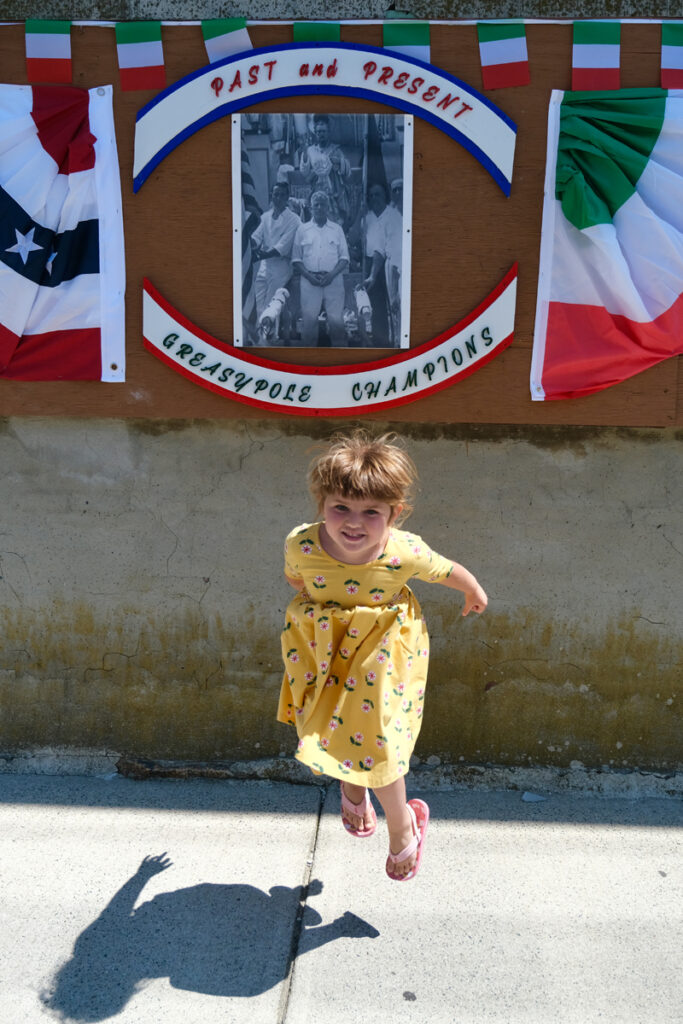
Before it became the extravaganza celebrated today, Fiesta was a modest gathering in the Gloucester neighborhood known as the Fort, a densely occupied harborfront community that was home to a large population of Sicilian immigrants who took up fishing upon their arrival in the United States. In the 1920s, fisherman Salvatore Favazza (Tom Favazza’s grandfather) commissioned an artist to create a statue of St. Peter, the patron saint of fishermen. When it arrived, it was displayed in the window of a shop owned by a family member in the Fort.
The statue began to attract women from the neighborhood, who would gather outside to pray for the safe return of their fishermen husbands, sons, and brothers, particularly in advance of June 29, the feast day of St. Peter.
“On their own, they gathered around it, dragged their chairs out of the house, sat around it, and said the rosary,” Ventimiglia says.
In 1927, the first Fiesta was held, a procession around the neighborhood in which local men carried the statue on their shoulders. There were American and Italian flags, children carrying holy pictures, and a 35-piece band. The celebration lasted from afternoon to night, according to Ventimiglia’s research.
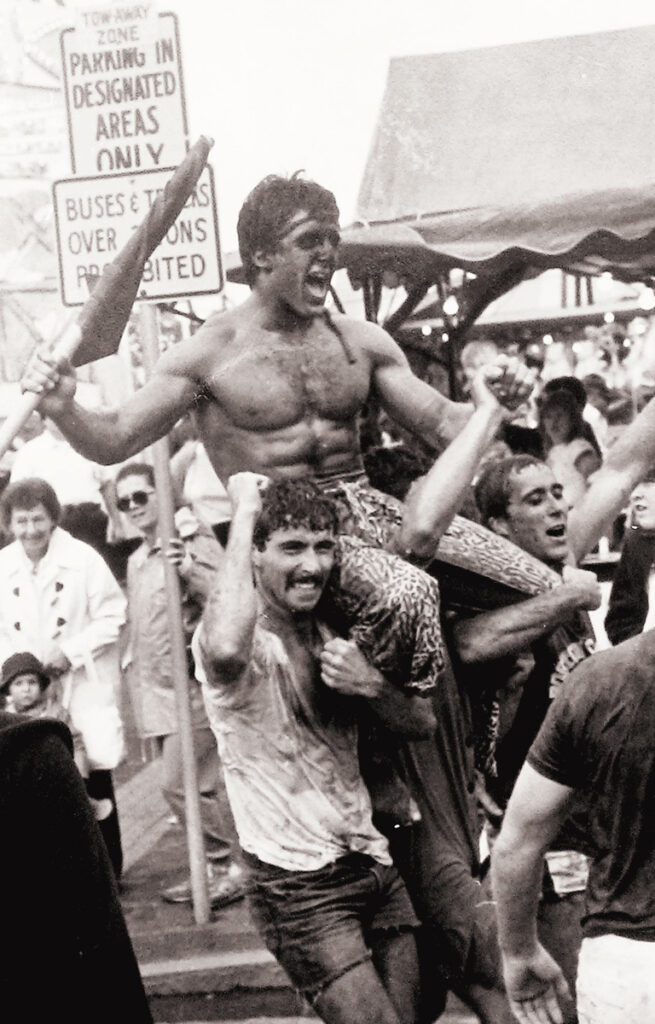
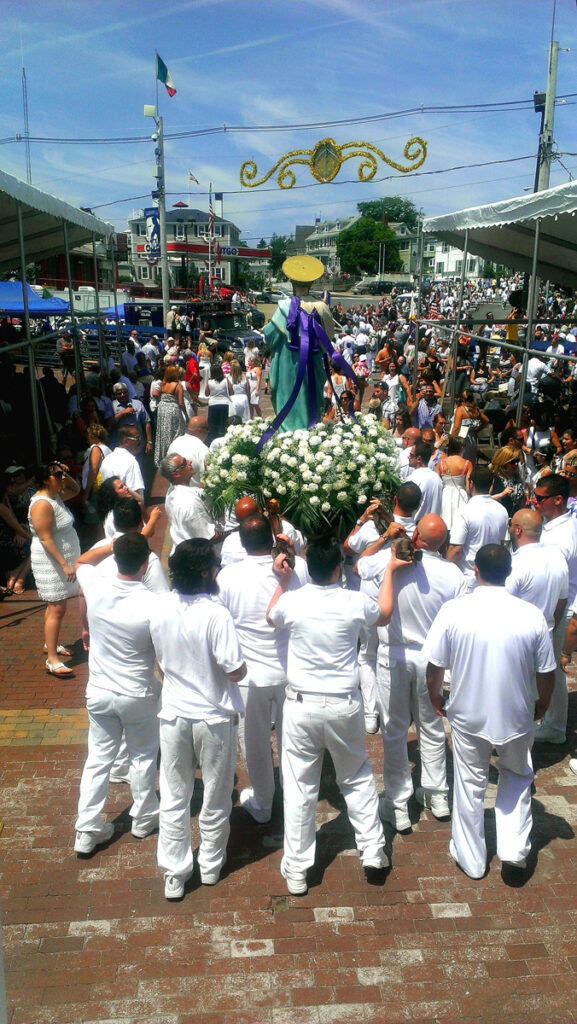
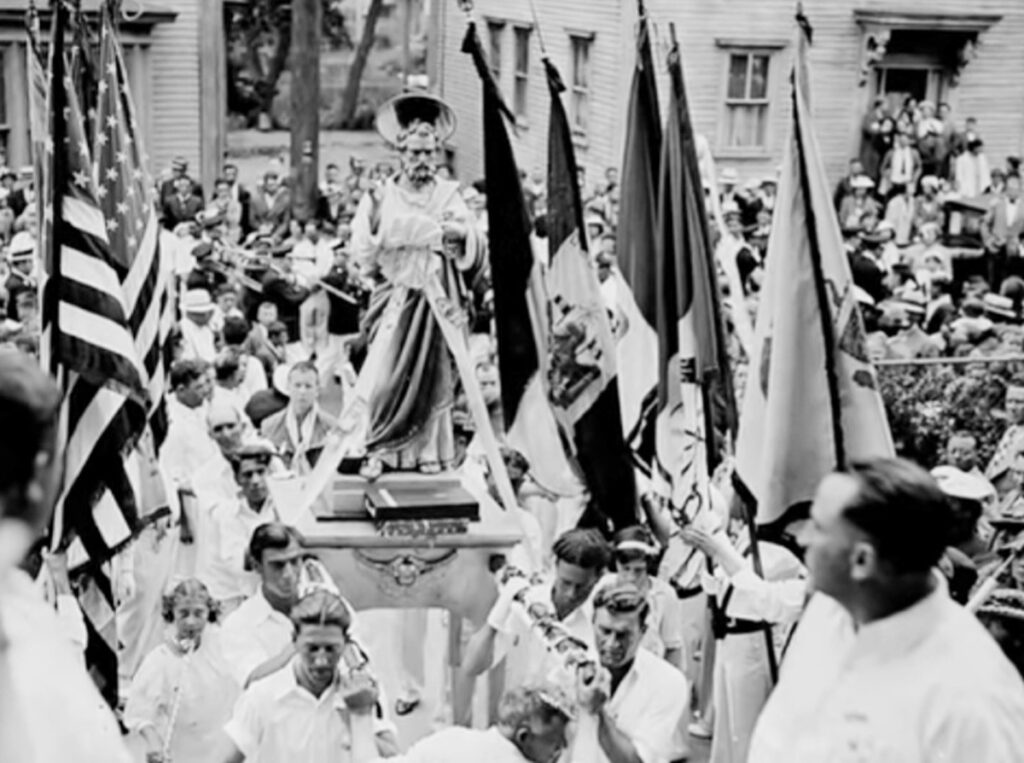
In the years that followed, the festival expanded in scope and length. The Greasy Pole was added in 1931, a recreation of a similar pole-walking event held in the town of Terrasini, Sicily, where many of Gloucester’s immigrants hailed from. Because the fishing boats, which typically spent much of their time at sea, would stay in port during Fiesta, it became a rare opportunity for the entire community to connect and celebrate.
As the gathering approaches its 100th anniversary, Favazza would like to see that spirit of community and tradition keep burning bright for another century.
“I just hope it goes on another hundred years,” he says, “and my ancestors can look down smiling.”

